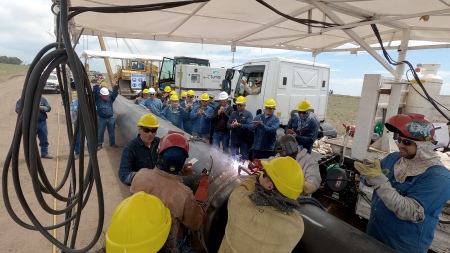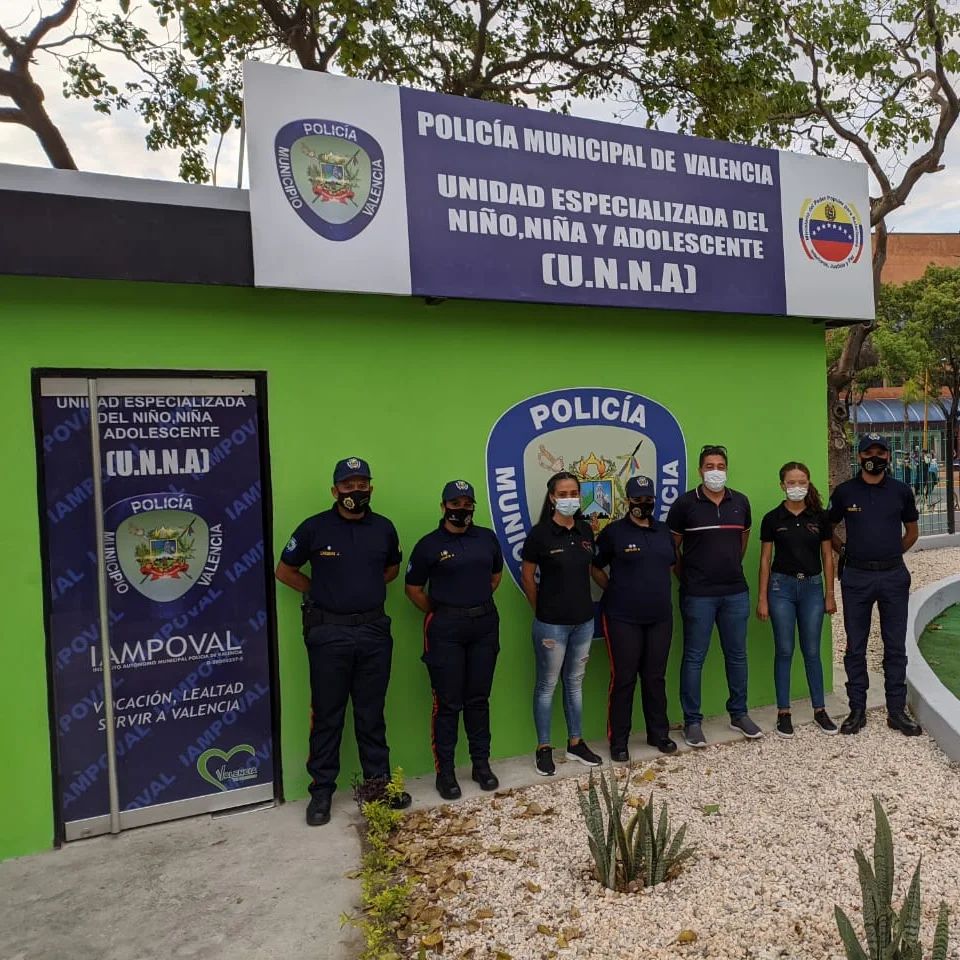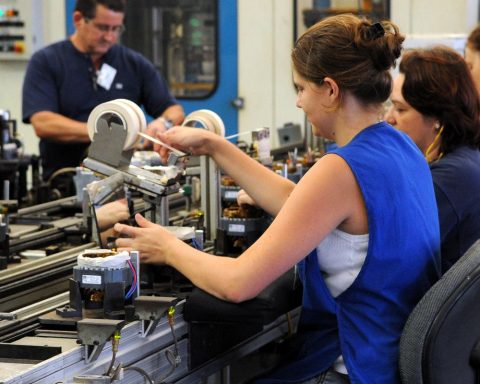The construction of the President Néstor Kirchner Gas Pipeline (GPNK) is advancing on its three simultaneous work fronts with the mobilization of more than 1,000 heavy equipment and machinery and almost 1,400 workersmany of whom were specially trained for the diversity of tasks that the work will demand.
After the milestone reached this week with the first welding of pipes in the Buenos Aires town of Salliqueló, the arrival point of the 573-kilometre laying, the company Energía Argentina -in charge of the mega-work- affirms that the deadlines foreseen so far, “are They are up to date.”
It is expected that for the remainder of the month and the first days of December, all the camps and fixed and mobile workshops of the two contractors that were awarded the works will be completed, and that the progress of the works will begin to accelerate until reaching the work peak in the last days of the year.
The work plan foresees the start of operation of the gas pipeline for June 20, 2023coinciding with the winter demand peak, for which the companies in charge of the construction plan an average laying of five kilometers of pipes per day.
These are 56,700 welded tubes, 12 meters long and about 5,000 kilos in weightof which 89% will be 36 inches in diameter, a technical measure required to withstand the pressure of transporting the 40 million cubic meters (MMm3) per day for which it was projected in its two stages.

Simultaneous work is being done on all work fronts and the increasing movement of operators in charge of laying the gas pipelineis generating a great impact in the towns and cities close to the trace due to the demand for all kinds of services for thousands of people and teams.
But the importance of the work does not only reach the Néstor Kirchner gas pipeline, but from Energía Argentina it is highlighted that the training of the employees and the equipment that arrived in the country will be the basis for the subsequent network expansion works provided for in the plan Transport.
One of the contracting firms, the BTU company, is in charge of the construction of the last section (Line 3) of the GPNK, with an extension of 130 kilometers that will extend from the area near Macachín, in La Pampa, to the Saturno Plant, close to Salliqueló, in the province of Buenos Aires.
“We are in full development of the first stage of the work; we have installed our main workshop in the town of Macachín, La Pampa, and in the Saturno area, we have placed some pipe stockpiles with more than 10 km of tubes already available and we have launched the first work fronts, including the opening of the runway and parade”, Carlos Damián Mundin, director of BTU, explained to Télam.
A) Yes, The contractor has already met several milestones of this first stageamong them the displacement of the field, the assembly of the workshops, the arrival of the equipment, the development of engineering, of the surveys.
“Now we are in the middle of receiving the pipes, and we are beginning the stages of the parade and welding,” added Mundin.
Precisely, the welding front is one of the most important of the work and the one that consumes the most resources in terms of number of personnel.
“At BTU we use a semi-automatic welding technology that requires qualified labor, which are the welders, who have been trained in similar works that have already been carried out before”Mundin said.
Today, in BTU it has about 180 people already established in the workand has a projection of reaching 550 employees in the coming weeks already in full production of the work.

At once It is expected to move almost 500 different types of equipmentamong them the most notable are the Pipelayers that allow the correct lifting of the pipes, large diameter pipe benders, cranes of different capacities, pipewelder and semi-automatic welding equipment, soil movement equipment, mobility for personnel, among others.
For its part, the temporary union of companies (UTE) made up of SACDE and Techint -contractors of lines 1, 2 and 4 of the GPNK- has already mobilized more than 1,100 teams between the double joint plant, tubes, sidebooms and others towards the trace of the gas pipeline; and hired more than 1,300 employees, with an expected peak of 3,700 people, said company spokespersons.
In addition, the automatic welding equipment from the United States is being assembled, state-of-the-art equipment that achieves productivities that guarantee the expected daily production, and is expected to start up in early December.
One of the keys to meeting the deadlines for the completion of the gas pipeline is the incorporation of technology and training of collaborators, for which “it is estimated that during the entire project 30,000 hours of training will be provided in trades such as welding, pipelayer management, safety and the environment, among others,” they indicated.
In this sense, the UTE created a Training Center in Pacheco, Buenos Aires province, which has already trained more than 90 pipelayer operators from 11 provinces, including: Salta, Tucumán, Río Negro, Misiones and Corrientes.
The pipelayers or sidebonistas are professionals specialized in the operation of pipelayers (sidebooms, by their name in English), complex equipment that fulfills a key function during the entire trace for the descent of the pipe.


















